
Climate Temperature & Precipitation Over Time

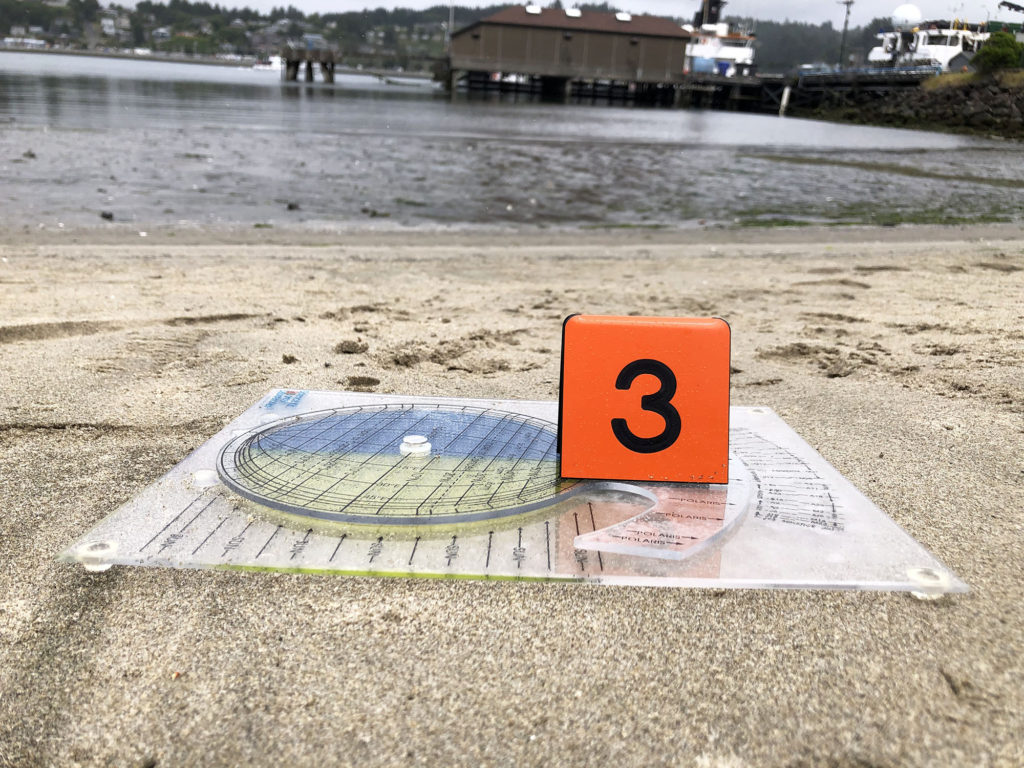
Climate Outcomes
-
Explain how sunlight distribution leads to varied ecosystems.
-
Describe the impact of altitude and north vs. south-facing slopes on mountain habitats.
-
Provide climate conditions and representative organisms of polar regions and tundra.
Think about how many times during the week that you have discussed the weather with someone else, or how many times you changed clothes or plans related to the weather.
Weather is short-term trends in temperature and precipitation; climate is a long-term trends in accumulated weather events.
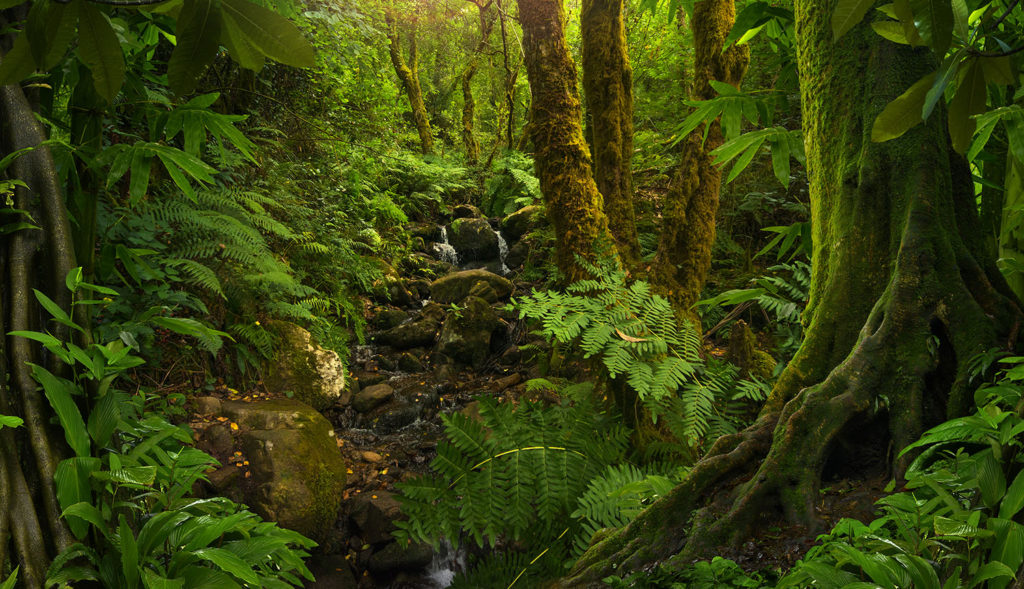
Climate differences on Earth’s surface lead to widely different terrestrial ecosystems: polar regions, tundra, forests, grasslands, and deserts.
Climate is impacted by the amount of direct sunlight and the presence of mountains. We’ll start with sunlight.
Sunlight hits the Earth’s surface more directly at the equator. That means in a given area, there is more sunlight hitting the Earth (and ocean) at the equator than the polar regions.
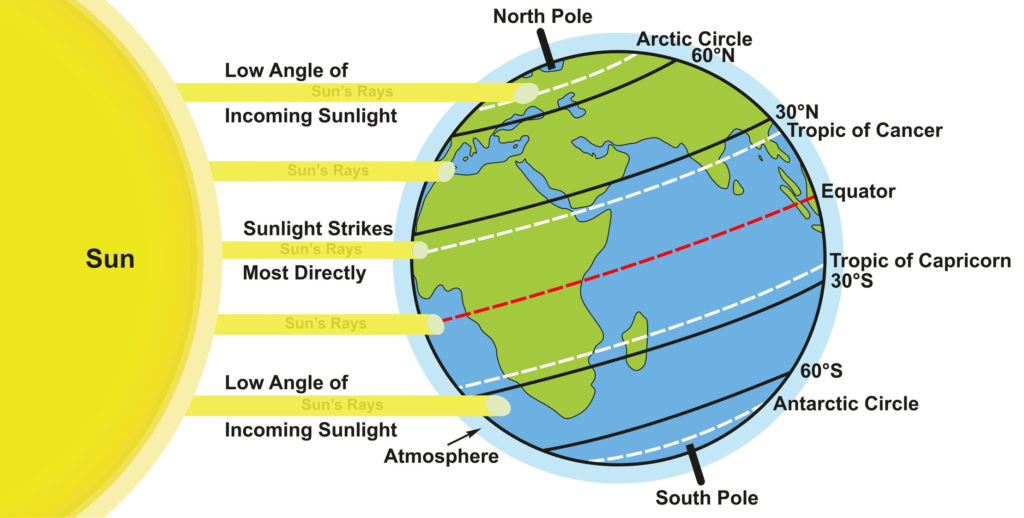
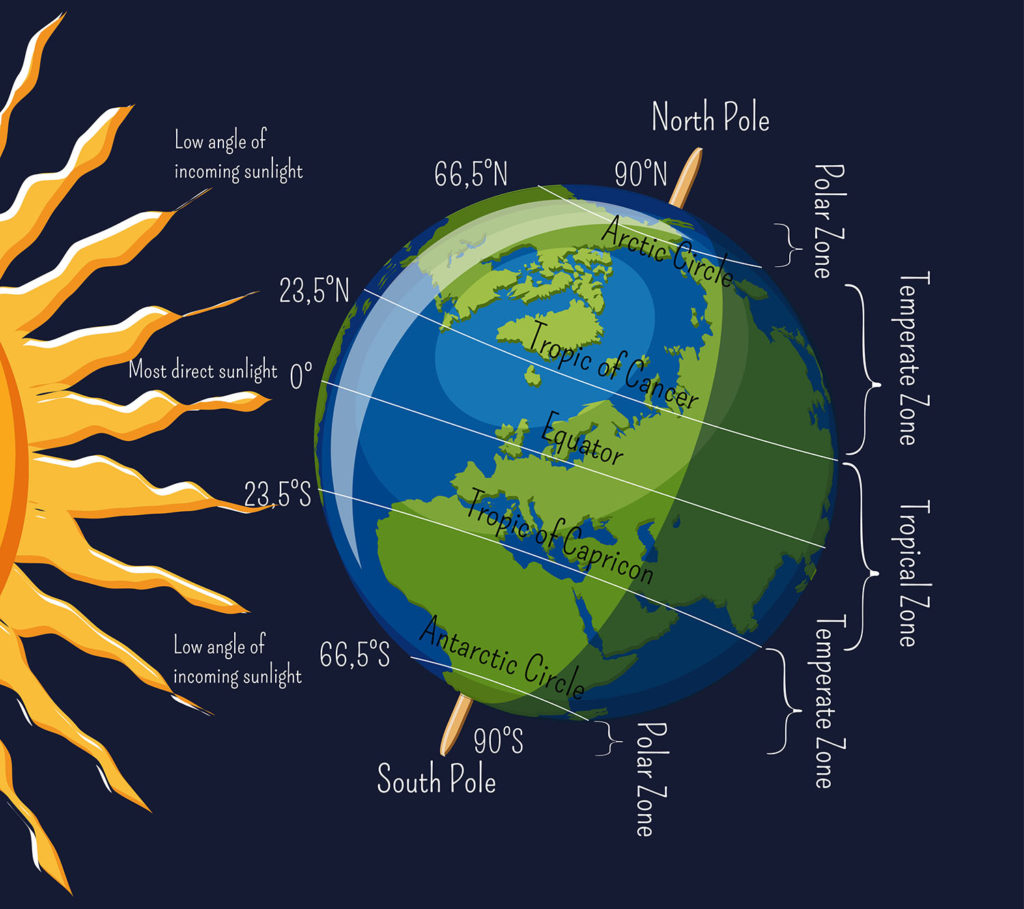
This creates different temperature zones: tropical as the equator, temperate north and south of the equator, and polar far from the equator.
The warmth at the equator creates a continual cycle of evaporation and precipitation. Wind currents that move north and south of the equator cause drier zones approximately 30 degrees north and south. The currents pick up enough moisture to support cold coniferous forests (Boreal taiga) around 60 degrees north latitude.

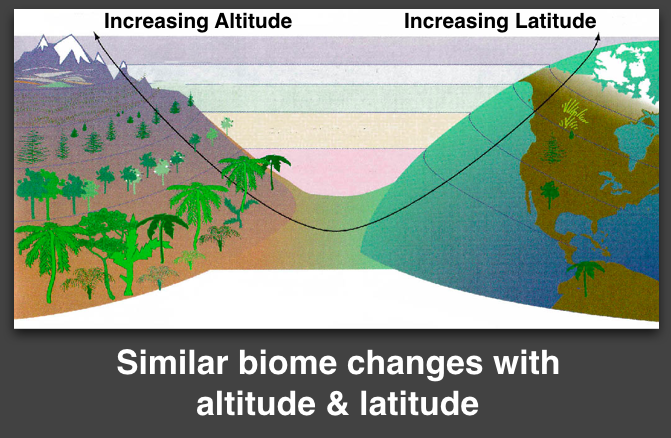
Mountains impact climate, an increase in altitude (height) is similar in moving higher in latitude away from the equator.
Mountains can also have different climates on the north and south-facing slopes as well as the east and west-facing coasts. The east vs. west will be introduced on the Biome Patterns webpage.
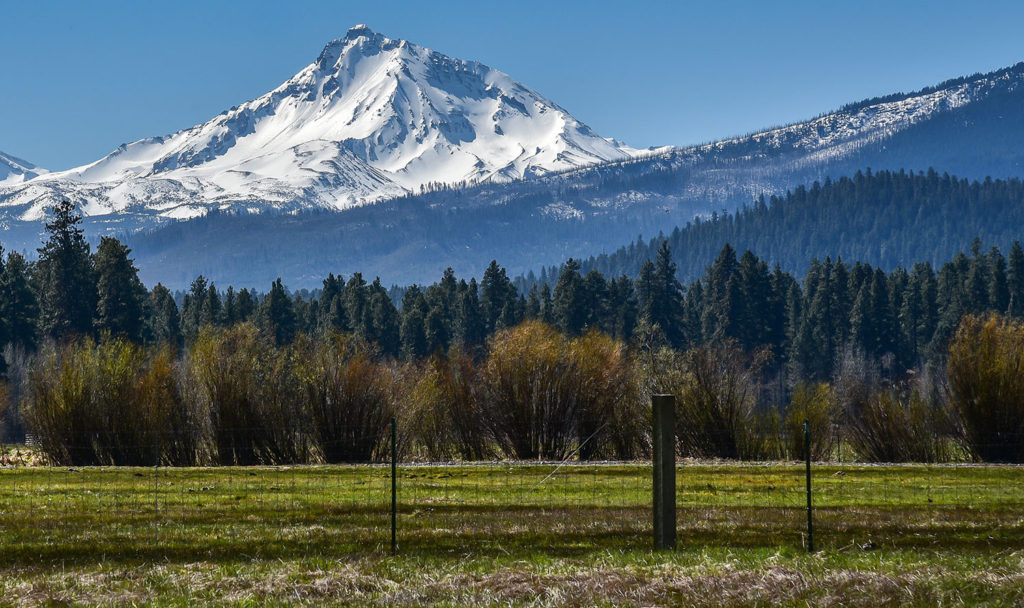
This video describes why temperature and moisture can be different on south-facing and north-facing slopes of hills and mountains.
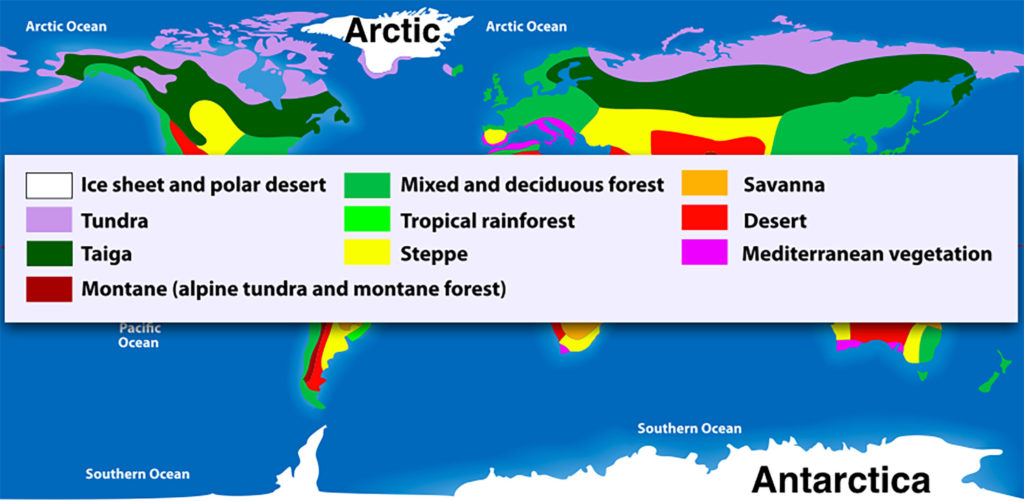
The polar regions of the Arctic to the north and Antarctica to the south receive the lowest amount of solar energy and have low temperatures as well as low precipitation.

Unlike other terrestrial ecosystems, the polar regions are dominated and defined by ice, not plants.
There are polar producers, primarily algae, with moss and lichens in limited distribution in warmer areas.
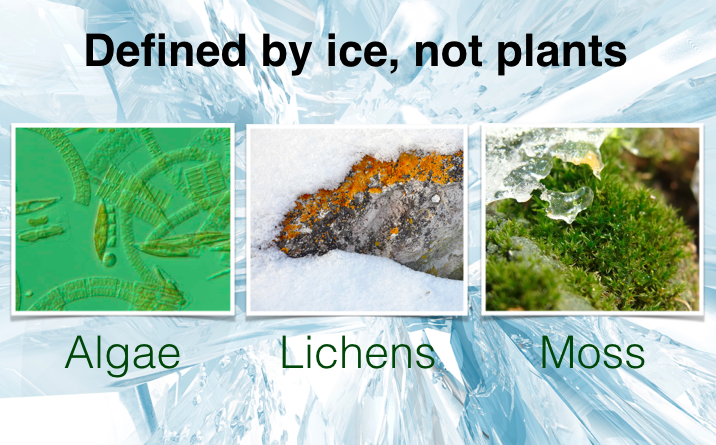
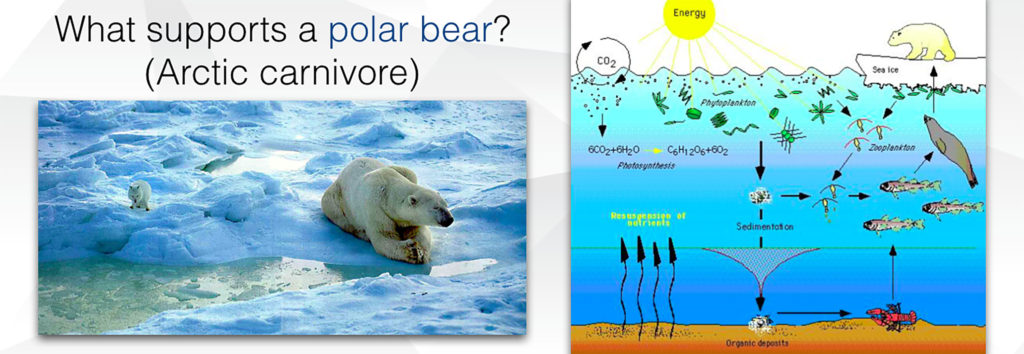
Polar bears are not eating these small producers, they are living off of seals that are part of aquatic marine food webs.
Emperor penguins live off of fish in marine food webs.

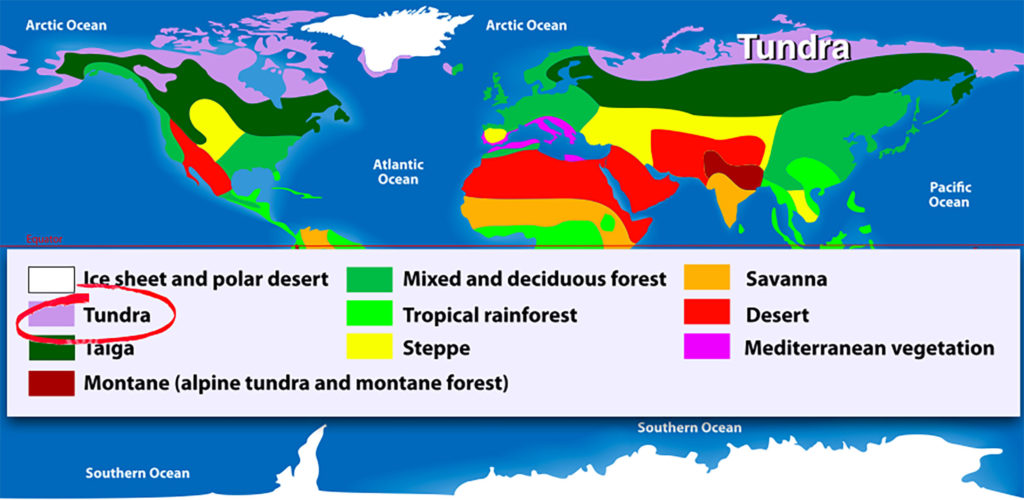
The tundra is directly below the arctic and covers an enormous area. Temperature is warmer, but even summer months are cold in the evenings. As a result, a layer of water called permafrost stays frozen all year long.

The low moisture and permafrost limits plant growth; few trees exist. Plants are small and rounded with lower surfaces areas exposed to the wind and cold.
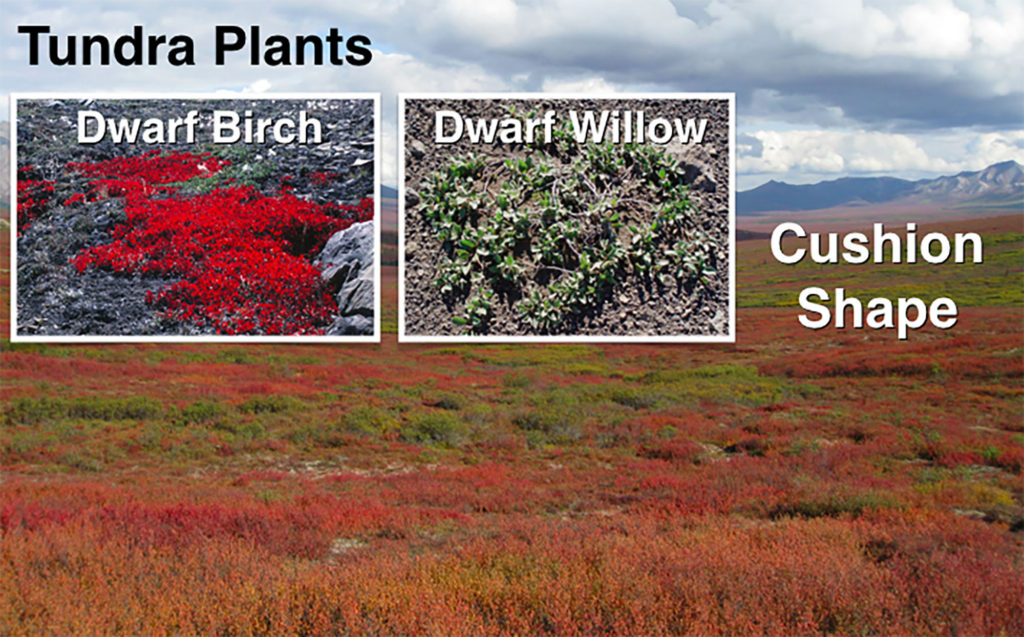

Herds of caribou, also called reindeer, can live off the moss, lichens, grasses, and small shrubs.
Start this Guide’s second journal assignment here
Journal Page #12: Science Outcomes
In science, emphasis is placed on concepts, skills, connections with other disciplines, and interactions with the global community. In this assignment, you will be reflecting on how science relates to your life.
Answer the following questions on a journal page. You do not need to include the questions, only your responses to each question. You can include additional relevant information if you like.

Questions to answer on your science outcomes journal page:
-
Science Connections. Large-scale issues often involve people from multiple disciplines working together.
Provide a specific example of a connection between your academic major and biology.
-
Science Community. Many factors impact how science is actually done. Science research is supported by private and public funds, is impacted by cultural context, and is communicated through the press, governmental agencies, and science teachers.
Describe how you personally can have an impact on science.
-
Science Concepts. From the BI 101 class so far, select a piece of knowledge that you would teach if you became a biology teacher.
Explain why you selected that particular concept and how you would like to present it to your students.
-
Science Skills. Scientists observe the natural world, analyze data (evidence), and draw conclusions. Provide a concrete example of how you (or someone else) could use these general aspects of science inquiry in daily life.
The next section describes the environmental elements that impact habitats and organisms.
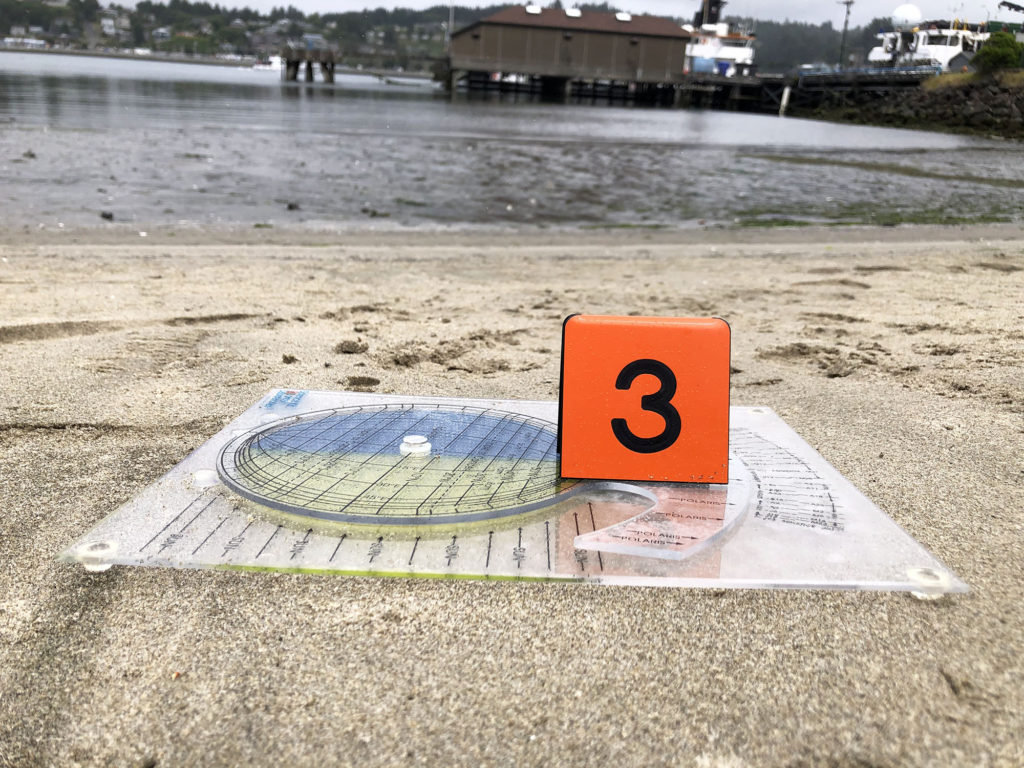
Check your knowledge. Can you:
-
Explain how sunlight distribution leads to varied ecosystems.
-
Describe the impact of altitude and north vs. south-facing slopes on mountain habitats.
-
Provide climate conditions and representative organisms of polar regions and tundra.



